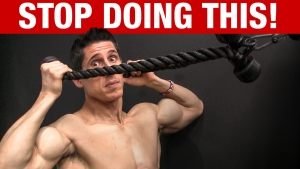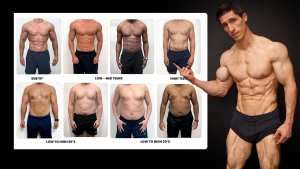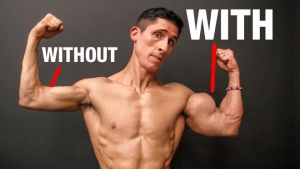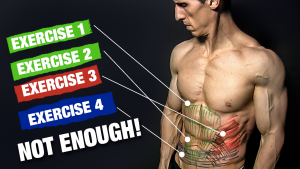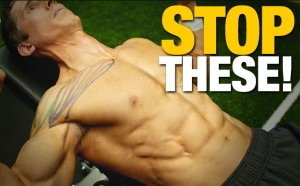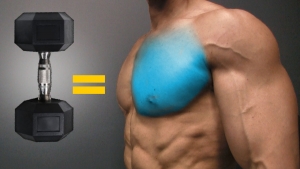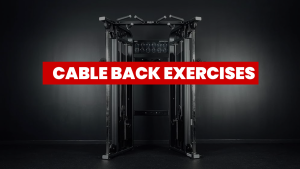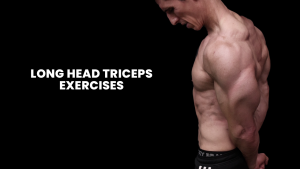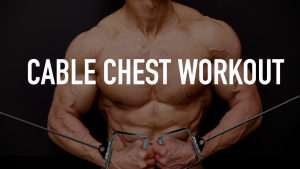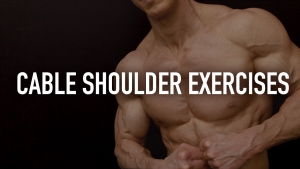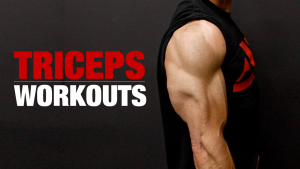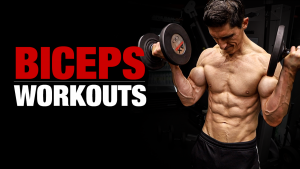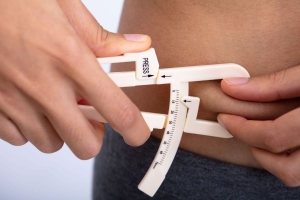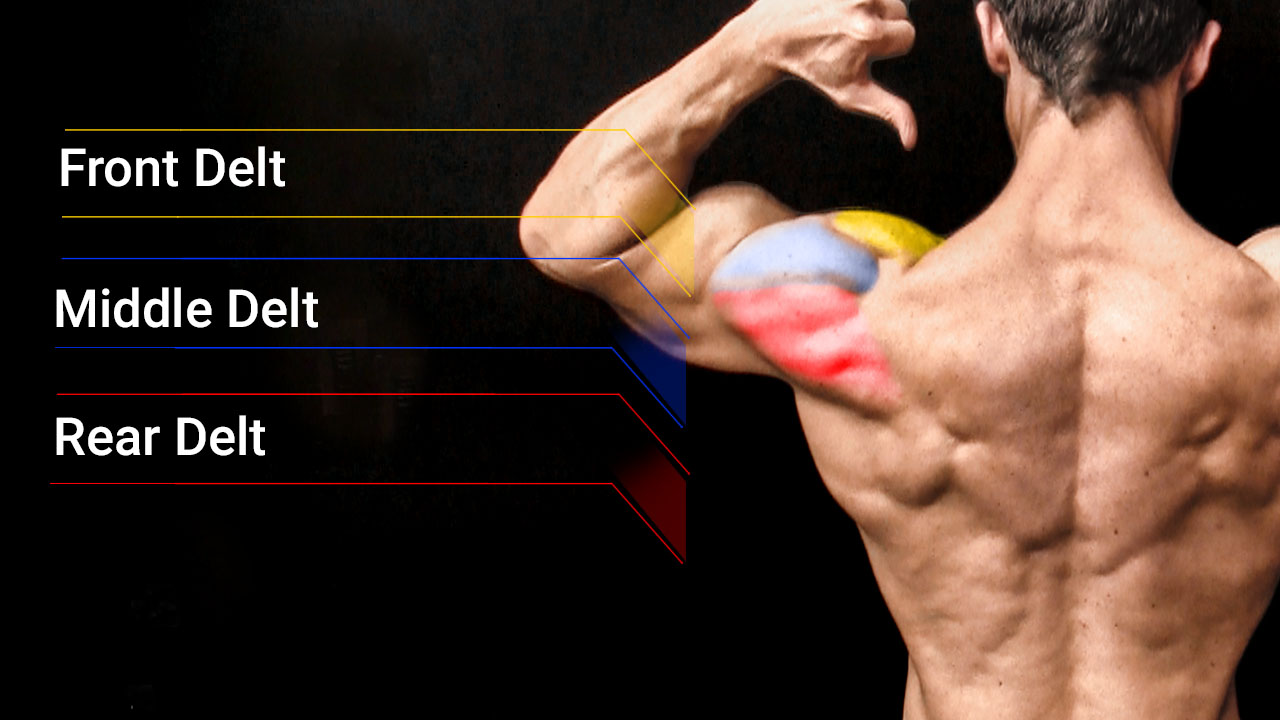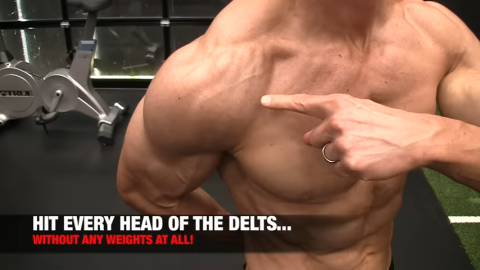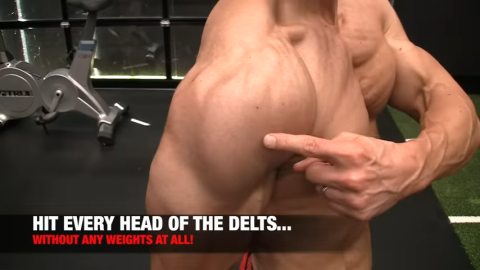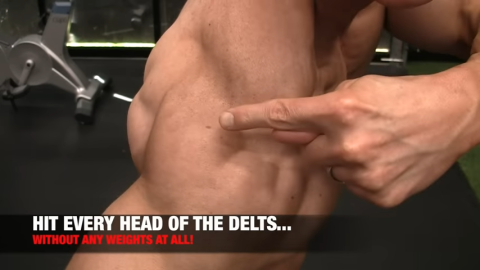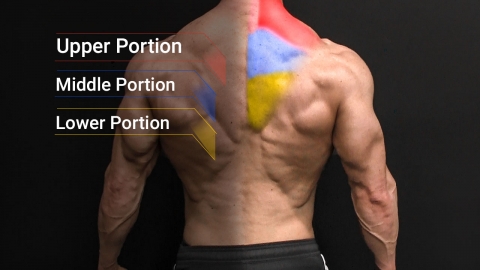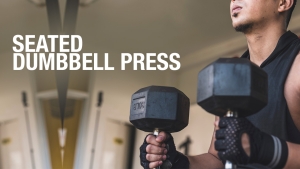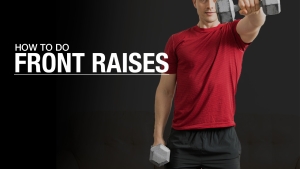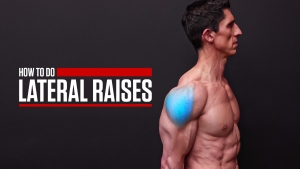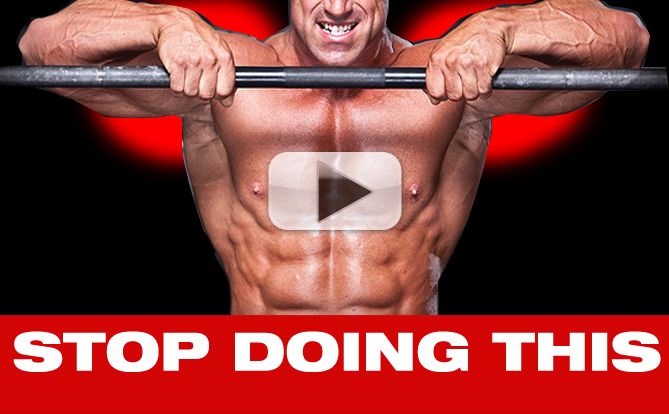
THE PROBLEM WITH UPRIGHT ROWS
The Upright Row isn’t a good exercise.
This might sound like I’m attacking or picking on this one exercise, but as a physical therapist and personal trainer, I must look at exercises objectively and tell you the facts.
When it comes to the barbell Upright Row, I need to tell you why this barbell training exercise is no good.
I know there are some of you that might say, “But Jeff, there are variations that you can do to make it better!”
There really aren’t.
And for all the “benefits” you think that the Upright Row has, I promise you the cons far outweigh these supposed benefits.
If you do barbell Upright Rows long enough in your weight training, you’re eventually going to run into soreness in your shoulder or wrist joints that seems to last from workout to workout. From here, you might even get hurt and suffer from subacromial impingement (shoulder impingement syndrome) or other injuries.
But instead of painting a bleak picture, I’m going to provide a systematic review of why I don’t recommend the Upright Row.
More importantly, I’m going to help you understand what you should be doing and how to start doing the best exercises for shoulders that target the same musculature.
ANATOMY OF THE SHOULDERS
Before I talk about why the Upright Row exercise is not the best, I want to breakdown the anatomy of the shoulder muscles.
Why bother with understanding what muscles are involved? It’s because when we lift weights, increase the intensity of our workouts or modify an exercise, it is important to know the muscles that are being trained and which ones are not so you can magnify that mind-to-muscle connection.
The mind-to-muscle connection is vital for two reasons. It helps you to achieve better muscle contraction and this leads to quicker and more efficient results.
With that said, we’ll look at each of the deltoid muscle heads in the shoulders, paying extra attention to the middle and rear delts, which are the ones primarily “activated” during an Upright Row.
FRONT DELT
The rear deltoids (or posterior delts) are located on the backside of your shoulders. The posterior deltoids are involved in shoulder extension and external rotation of the arm. Training this muscle can help prevent “rounded” shoulders, as well as improve posture by providing more support to the spine.
UPPER TRAPEZIUS MUSCLE
The upper trap muscles are responsible for shoulder elevation and scapular retraction, making them a key component in any shoulder exercise routine. They are also involved in shoulder girdle stability and neck flexion/extension.
PROBLEM WITH THE UPRIGHT ROW EXERCISE
Now that you have a better understanding of the muscles and where they are located, you’ll be able to better visualize the problem with the barbell Upright Row exercise.
When we look at the Barbell Upright Row, most of us go back and think about the version that we all learned from Arnold and the classic bodybuilders.
They grabbed the barbell with an overhand grip, generally using a shoulder-to-narrow grip, and they literally lifted heavier weights to the height of their ears. Trainers taught the exercise this way for years!

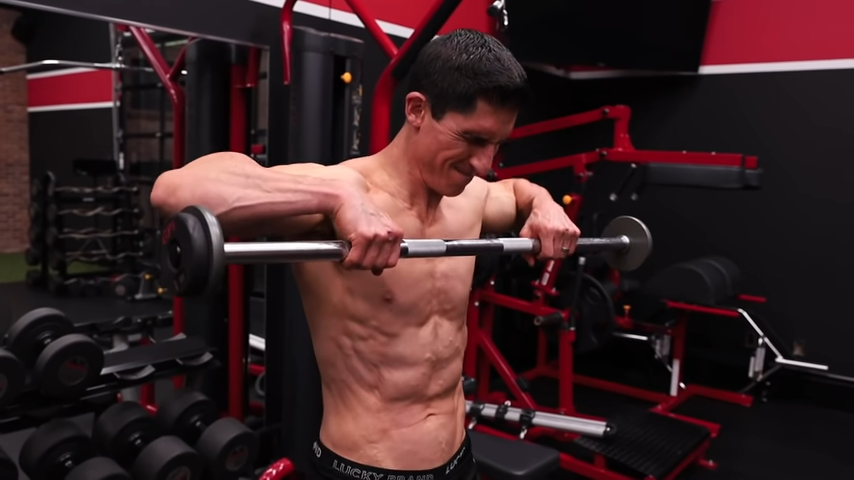
When you look at the barbell Upright Row, the problem is twofold: elevation and internal rotation. What’s more, the exercise lacks adequate muscle recruitment. Not to mention, your wrists are placed in an awkward position.
Funny thing is, my problem with this exercise isn’t even about the weight load most people use!
It doesn’t matter if you’re using excessive weight or moderate weight, elevation and internal rotation are a bad combination.
Yes, lifting to shoulder height still counts as elevation.
Every single rep of this contraindicated exercise places your shoulder into an internally rotated angle with elevation, and this might sound or look familiar because it’s the exact position that you would be in for a shoulder impingement test!

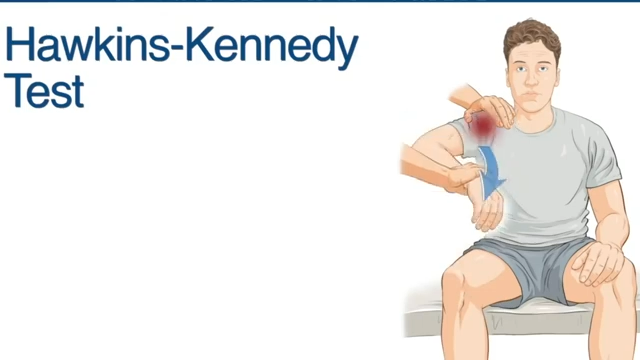
In other words, the likelihood of shoulder impingement is sky high with Upright Rows.
Now, you might be saying, “But Jeff, I only lift to roughly chest height with an EZ Curl bar using lighter weights – It’s safer!”
To understand why this is still a problem and how this causes one of the most common injuries in weight lifting, let’s take a closer look at the mechanics of the Upright Row.
To do that, I’ll need Raymond.
You see this big bump here on Raymond’s shoulder?

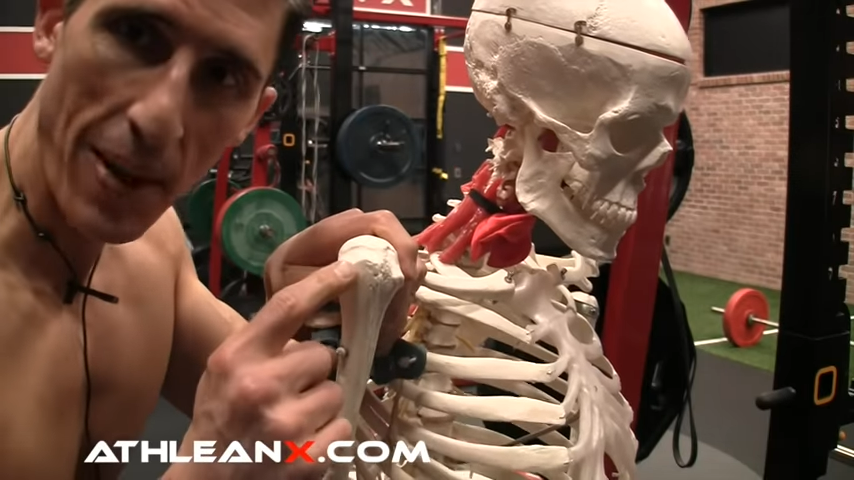
This bump is what’s causing the lack of space when you internally rotate.
Anatomically, we all have this bump on the outside of our bone. If I’m doing the Upright Row and I go to elevate while internally rotating, there is now less space because this is occupying more space inside this joint when I lift it.
What’s more, anything that runs underneath the acromion can get pinched, including the rotator cuff tendons, bursae, and bicep tendon.
In other words, the range of motion of the Upright Row is going to put you in harm’s way, if you do it long enough.
Once you suffer from impingement one time, you’re more likely to develop chronic impingement syndrome, which means you continuously get shoulder discomfort.
And yes, these shoulder issues and risk of injury still exist even if you perform Upright Row variations like the Kettlebell Upright Row or Dumbbell Upright Row!
Guys, here’s the important thing: This is not a sudden shoulder injury exercise.
Instead, the Upright Row causes a lot of wear and tear over time. Your muscles and tendons are like a rope that gets frayed over and over, and over again.
Ultimately, it winds up giving out, and this means your upper body workout is trashed from that point.
And this is going to impact more than your exercise performance. It’s also going to mess up your overall exercise goals! After all, how can you lift if you’re injured?
You may not have any shoulder pain right now, but you will over time if you continue to do the exercise and you don’t mix it up with better alternatives.
DO THESE SHOULDER EXERCISES INSTEAD
With that said, what can you do about the Upright Row? Are there Upright Row variations you can do?
Is there a better upper body exercise or series of exercises that hit the same target muscles but are better for a strong shoulder region?
You bet!
There are comprehensive exercise libraries that feature far better exercises than the Upright Row, and I’m including a few below.
All of these exercises target the same muscle groups as an Upright Row, but they do it more effectively and much safer.
DUMBBELL HIGH PULL

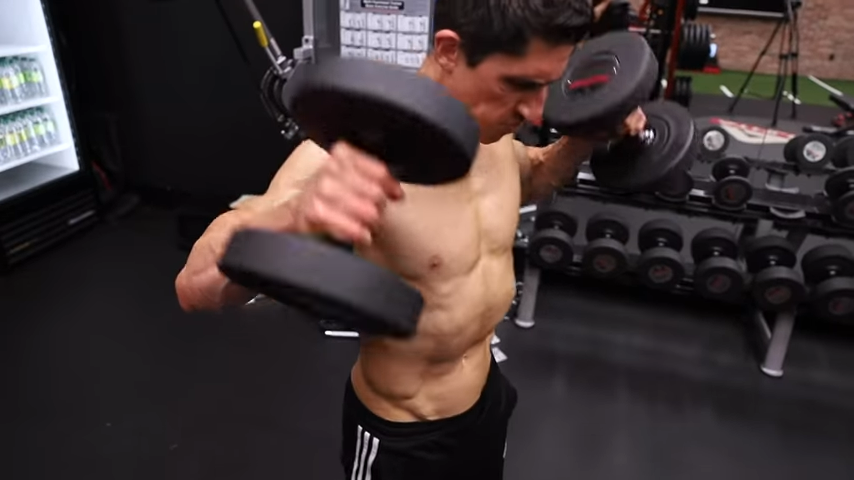
HOW TO DO THE DUMBBELL HIGH PULL:
- With a Dumbbell High Pull, you will pull up and externally rotate the arm up beyond shoulder level instead of internally rotating the arm like with the Upright Row.
- Grab a pair of dumbbells, pull up and back, feel that contraction in the middle and rear delts, then slowly bring it back in a controlled movement to the starting position.
- You might feel like these remind you of Rear Delt Flyes as far as how they feel in the rear delts. The pulls of this exercise are safer because there is no internal rotation. You can also use kettlebells or resistance bands for this exercise.
WHAT MAKES IT EFFECTIVE: This is a more effective exercise than the Upright Row because we’re still getting the activation of the delts along with the traps, and we’re getting it in a much safer execution of the exercise. Just remember to focus on perfect technique. These are muscle builders!
BODYWEIGHT SIDE LATERAL RAISE

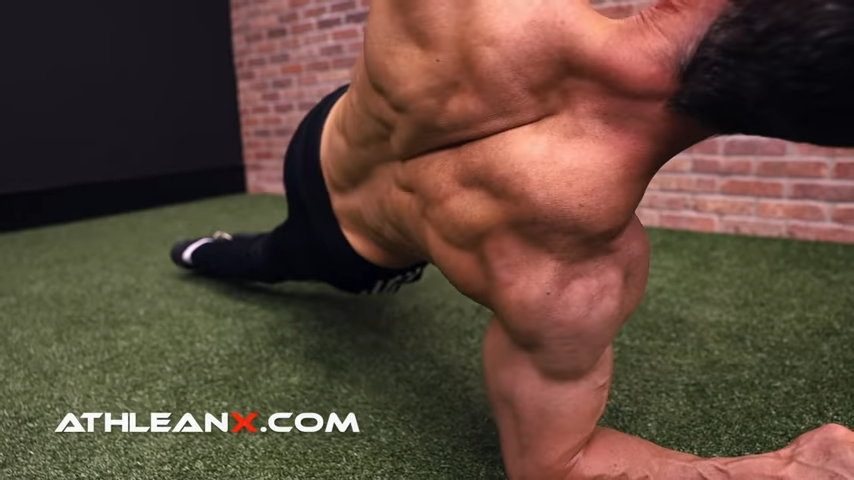
HOW TO DO THE BODYWEIGHT SIDE LATERAL RAISE:
- For this effective shoulder exercise, starting position is in elbow plank position on the floor.
- Drive the elbow into the ground as you rotate your torso away and then rotate it back.
- Though the arm is staying stationary, the body is creating abduction at the shoulder joint which creates a bodyweight shoulder exercise capable of building the middle delt.
WHAT MAKES IT EFFECTIVE: Using the concept of relative abduction, we can hit the lateral delts and turn this home delt exercise into one of the best for increasing shoulder width at home. The middle deltoid muscle performance in this exercise is intense!
CHEAT TO STRICT LATERAL RAISE

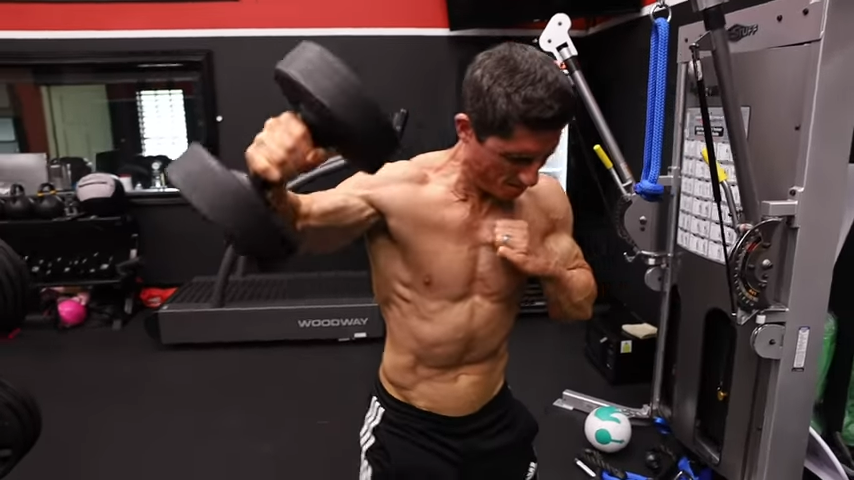
HOW TO DO THE CHEAT TO STRICT LATERAL RAISE:
- You can start with heavy weights here to perform a Cheat Lateral.
- The key in this effective movement is to swing the weight up a bit but control the eccentric lowering on the way down.
- After reaching failure, immediately grab a light weight and rep out with a Strict Lateral Raise once again to failure. Use correct form in these exercises because with bad form chances of injury increase.
WHAT MAKES IT EFFECTIVE: These eccentric muscle contractions are a useful way to create muscle mass and overload. This is excellent for muscle growth and overall shoulder hypertrophy!
HANDSTAND PUSHUP

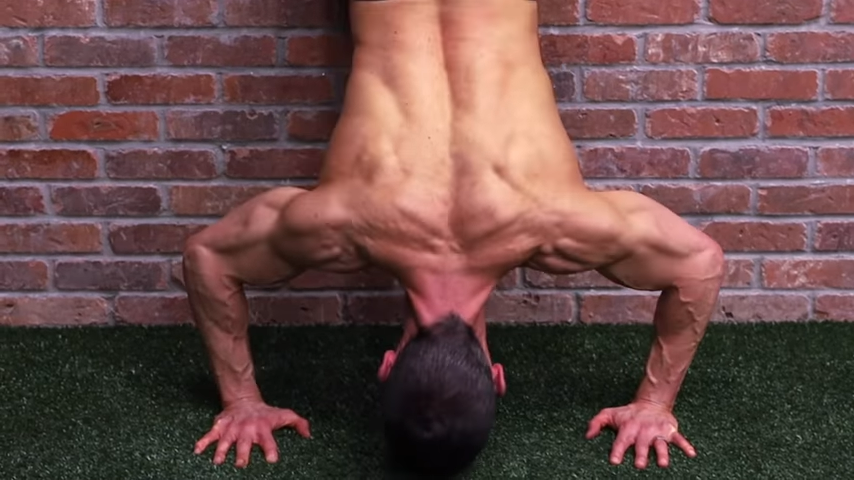
HOW TO DO THE HANDSTAND PUSHUP:
- Start by assuming the handstand position. Place your hands on the ground about shoulder-width apart and kick up into the handstand with your feet against a wall if necessary for balance.
- Keep your body in a tight line by engaging your core muscles, glutes, and quads.
- Slowly bend at the elbows until your head almost touches the ground, then press through your arms to return to the starting position.
- Once you’ve mastered the basic version of the handstand push-up, try adding in a press at the top of your rep for an added challenge. To do this, when you reach the top of your push-up and have your hands fully extended, push away from the ground as hard as you can for a second or two.
- Lastly, make sure to practice proper form during the entire movement and stay consistent with your training.
WHAT MAKES IT EFFECTIVE: The Handstand Push-up is an incredible exercise! With that said, this bodyweight exercise requires advanced range of motion along with immense upper body strength and balance. However, with proper form and consistent practice, anyone can perform this challenging move. When it comes to bodyweight shoulder exercises, the best of them all for creating muscle mass is the Handstand Pushup. This hits every head of the delts and does so without a large amount of weight, proving that you can build your shoulders without weight. This is a great exercise for any effective strength training routine, whether bodyweight or not.
When the biomechanics of the exercise itself are literally fighting your own body’s anatomy, I just can’t recommend an exercise like that for any exercise programs.
And that’s exactly what the Upright Row does. It is a straight up shoulder wrecker.
I don’t care if you think you can get away with it in a single workout, training block, or even 15 years of training with this well-known shoulder exercise, over time you’re likely going to run into a problem.
The fact is, there are better exercise options that can achieve the same thing and do a better job at it while emphasizing shoulder safety.
If you don’t currently have a strength training workout, we’ve got you covered. Check out our ATHLEAN-X programs to see which one best fits your personal goals and fitness level.

- There are three main muscles that are targeted by Upright Rows: Middle delts, rear delts, and traps.
- Unfortunately, due to the movement pattern of the Upright Row exercise, not only is muscular activation lacking, but you put your shoulder is at risk for soft tissue damage and rotator cuff impingement.
- When you perform an Upright Row, you are elevating while internally rotating at the shoulder. This is a terrible combination and one that puts you at serious risk of injury.
- All of us have a bump on the outside of our arm bone. When you perform an Upright Row, you elevate while internally rotating, and the space around this bone is reduced because it occupies more inner joint area as you lift.
- Furthermore, the acromion can make it easy to pinch any tissues underneath it such as rotator cuff tendons, bursae, and even your bicep tendon.
- Instead of the Upright Row, try using shoulder exercises that target the same muscle groups including the Dumbbell High Pull, Bodyweight Side Lateral Raise, Cheat to Strict Lateral Raise, and Handstand Push-Up.
UPRIGHT ROWS FAQS
An Upright Row is an exercise that targets the entire shoulder muscle, specifically the anterior deltoid, medial deltoid, and upper trapezius. It is commonly performed with a barbell, but can also be performed with dumbbells, kettlebells, and resistance bands.
Upright Rows primarily work the following muscle groups: middle delts, rear delts, and upper traps. This is a great exercise for building upper body power and strength. To an extent, you might feel this in your biceps but as I mentioned above, this is the form that the barbell forces you into and not necessarily the targeted muscle.
To perform the classic Upright Row, begin with your feet shoulder-width apart and knees slightly bent. Hold a barbell or dumbbells (with palms facing inwards) just below your waist with an overhand grip. Keeping the arms close to the body and elbows slightly bent, lift the bar or dumbbells up towards your collarbone. Pause briefly at the top and then slowly lower back down to the starting position.
Now, as I've mentioned above, even though this exercise has been around for a long time doesn't mean I recommend it, and here's why. I don't recommend the Upright Rows, especially if you have shoulder impingement issues. This exercise should be avoided because it puts your shoulder in an internally rotated position when lifted, placing strain on the joint.
REFERENCES
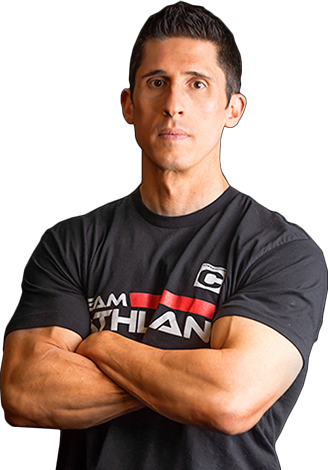
Jeff Cavaliere M.S.P.T, CSCS
Jeff Cavaliere is a Physical Therapist, Strength Coach and creator of the ATHLEAN-X Training Programs and ATHLEAN-Rx Supplements. He has a Masters in Physical Therapy (MSPT) and has worked as Head Physical Therapist for the New York Mets, as well as training many elite professional athletes in Major League Baseball, NFL, MMA and professional wrestling. His programs produce “next level” achievements in muscle size, strength and performance for professional athletes and anyone looking to build a muscular athletic physique.
